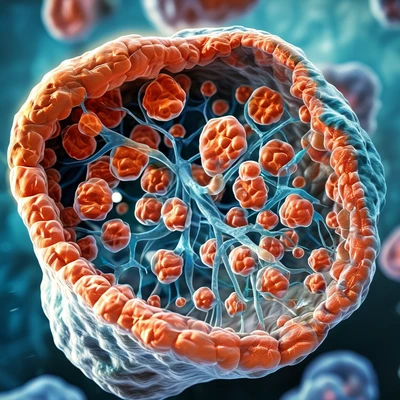Lipid nanoparticles with targeted delivery capabilities have successfully corrected DNA mutations in animal models of alpha-1 antitrypsin deficiency, offering hope for a potential treatment in humans suffering from this rare inherited condition.
A recent study published in Nature Biotechnology by researchers at UT Southwestern Medical Center utilizes lipid nanoparticles to transport gene therapy specifically to lung and liver cells, organs primarily affected by the disease.
Nature BiotechnologyIn mice designed with a mutation that mimics alpha-1 antitrypsin deficiency, selective organ-targeting nanoparticles delivered the gene therapy, correcting approximately 40% of liver cells and 10% of lung cells. This intervention reduced levels of problematic proteins associated with this condition by over 80%.
"The study shows results not previously seen," said Dr. Terence Flotte, a pediatric pulmonologist and dean at the University of Massachusetts T.H. Chan Medical School, who was not involved in the research. "It appears quite compelling to me."
Alpha-1 antitrypsin deficiency is an inherited disorder that can harm the lungs, the liver or both, affecting about 80,000 to 100,000 people in the U.S., stemming from mutations in the SERPINA1 gene.
The SERPINA1 gene typically produces alpha-1 antitrypsin, a protective protein for lung tissues. When mutated, however, this protein doesn't function correctly and leads to tissue damage in both lungs and liver due to unchecked neutrophil elastase activity.
Current treatments like augmentation therapy can help manage symptoms but do not offer a cure. The new study suggests gene therapy using lipid nanoparticles as a promising approach to treating alpha-1 antitrypsin deficiency directly at its genetic root.
The UT Southwestern research team focused on refining these particles, often intercepted by the liver due to its fatty nature, to target other organs effectively. They succeeded in creating lipid nanoparticles that can home in on specific cells within organs other than the liver.
Researchers discovered that by incorporating an additional fifth lipid compound into standard four-component lipid nanoparticle structures, they significantly enhanced the particles' ability to deliver therapeutic genes directly to lung tissue while bypassing the liver altogether. This innovation could unlock new potential for treatments targeting other genetic diseases affecting multiple organs.
In their experiments with mice engineered to mimic alpha-1 antitrypsin deficiency, researchers loaded nanoparticles with a base editor capable of correcting the mutated gene variant known as Z. Mice receiving the treatment showed notable improvements, with 40% of liver cells and 10% of lung cells cured after several weeks.
These encouraging findings emerge as Beam Therapeutics in Boston reported initial promising clinical trial data for their alpha-1 antitrypsin deficiency gene therapy (BEAM-302), which focuses on correcting the mutated SERPINA1 gene within the liver.
The UT Southwestern study opens avenues to further explore selective organ-targeting lipid nanoparticles for treating multiple genetic diseases, like cystic fibrosis and primary ciliary dyskinesia. The ReCode Therapeutics company is already investigating these novel particles as delivery vehicles for such therapies.


